Like to stay in the know?
Sign up and we'll send you info hot off the press.
The six main causes for poor cellular signal are:



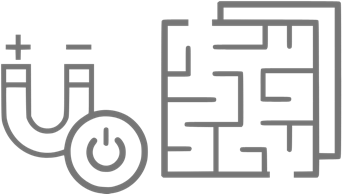


Cell phone signals are radio frequency waves, the AM/FM kind. Radio frequency is made for long-distance wireless communication; however, there’s a trade-off.
Almost anything in between you and the cell tower can disrupt your cell signal. Those two factors (distance and obstruction) are the most important reason for your poor signal.
Cell phone signal strength is measured in dBm, with -50 dBm being great signal or full bars. -120 dBm is considered a no signal area or a dead zone. The closer you come to -120 dBm, the more unreliable the signal, and vice versa.
You can find your cell phone signal in dBm by accessing Field Test Mode on your phone.

Starting with iPhone 7 & above and iOS 11 & above, hardware and software revisions have limited the chances of finding your signal strength in dBm.
If you’re unable to find any of these options during your field test mode process, you most likely have an incompatible carrier and chipset. The next best method is performing a speed test around areas inside and outside your home. But once we crack the code on dBm readings on your iPhone, we’ll update as soon as possible.
Field test mode on Android varies by phone model and Android OS version. However, it is generally found under the Settings menu.
Typical sequence:
Once you have your dBm reading through field test mode or app, walk around inside and outside the perimeter of your home. Make note which areas get the best dBm reading. This shows you the general direction of your cell tower and which rooms inside your home have the best reception.
Besides accessing Field Test Mode (listed above), we also recommend these apps to point to your nearest cell tower.
For more information: See our comprehensive Blog Post finding your nearest cell tower
A cell phone signal booster (also known as cellular repeater, cell phone antenna booster, or a cellular amplifier) is an certified and network-approved system (that improves your weak 3G & 4G LTE cell coverage.
It’s like a megaphone for your cellular signal: it takes incoming signal from the outside, amplifies it, and then broadcasts the stronger signal inside your home, car, or office.



Signal boosters were–and still are–used predominantly in rural areas for individuals dealing with cell tower distance.
With the rise and demand for faster data speeds, cell signal boosters are now in high demand for businesses and power users in urban areas.
With cellular speeds nearly matching that of landline internet, more people rely on their cell phones as the only way to connect to the internet. Cell phone boosters ensure constant connectivity whether for work, play, convenience, or emergency.
There are three types of responses: Yes. No. Kinda.
And these groups are responsible for the variety of high praise like “Heaven sent” to another that screams “Worse than my ex.”
So why the big difference? Two reasons:

First, cell phone boosters are HIGHLY dependent on the outside signal. Signal boosters do NOT create signal but take existing weak signal and amplify it. It “cures the ailing” but does not “raise the dead.” In other words, your mileage may vary.
Second, boosters come with an inside antenna and outside antenna. One grabs existing signal from the outside. The other broadcasts enhanced signal indoors. Having enough separation between the two avoids oscillation. Think of standing too close to the speaker with a microphone.
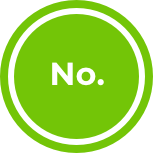
The No Camp have problems with the first situation. They didn’t have enough signal to begin with; therefore, they feel they got a lemon. So to avoid being in the No Camp, make sure you have at least -95 dBm of outside signal. Even better, go outside and make a call, watch YouTube, stalk on Facebook, or do what you normally do. If it’s a seamless experience outside but interruptions inside, then a booster will work.

The Kinda Camp have problems with the second situation. Yes, the booster works, but people are too close to the inside antenna to get any coverage and feel limited by its range. That’s because the inside antenna is broadcasting to the outside antenna and forming a feedback loop that is causing the system to not perform efficiently.
Having enough separation–at least 6 meters vertically and 15 meters horizontally–and making sure the inside antenna is not broadcasting towards the outside antenna are key for optimal boosting.
Almost every cell phone signal booster is composed of three parts.
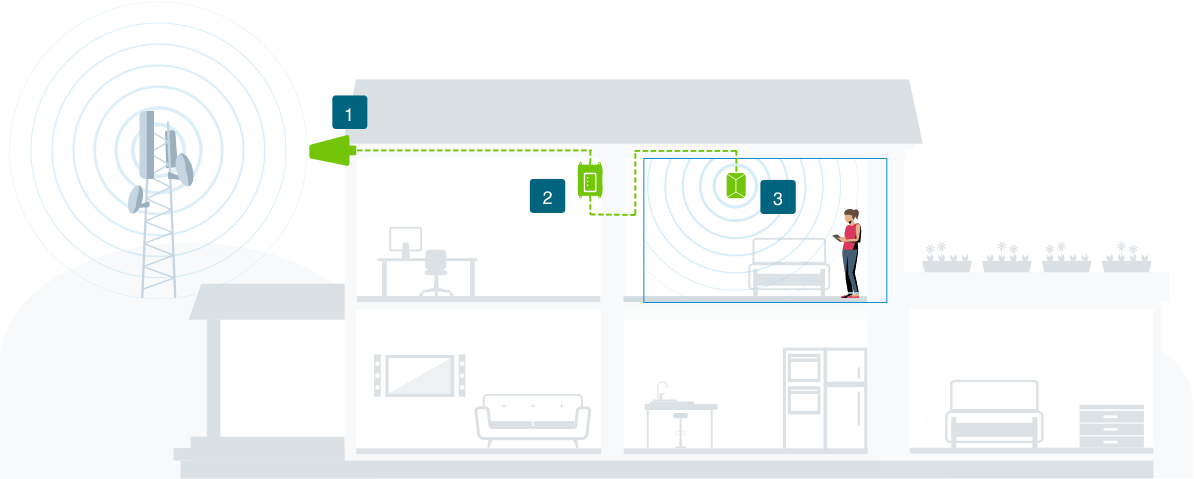





What makes one amplifier different from another? There are two main variables that make the determination: gain and downlink power.
Gain is about signal strength. It simply measures how much the signal is amplified, using dB. The more the gain, the more signal from the outdoor antenna is amplified. Most home boosters will range from +60 to +70 dB, while commercial boosters will have +70 dB and better downlink power.
Decibels are measured exponentially. Every +3 dB increase doubles the power. This also means for every - 3 dB decrease, the power is halved.
Keep this in mind when comparing signal boosters. A + 3 dB gain is significant!
This is why single-network solutions provide wider coverage for their designated carrier - they are able to focus all their power on amplifying those cellular frequencies assigned to that particular network, and give greatly enhanced gain.
Downlink power is about coverage area, the maximum signal the amplifier can transmit inside a defined space, measured in dBm. Therefore, the maximum downlink power sets the maximum coverage area of the system when the amplifier has a good enough signal.
Installing a cell phone booster system is straightforward and simple for most homes. However, for commercial installations, we recommend going with a professional installation team.
If you have any questions call us at +27 (010) 157 0190 or email sales.gh@boltontechnicalafrica.com for a free consultation.
Cell phone signal boosters are sophisticated pieces of equipment, and like any electronic device, can become overwhelmed. Sometimes, your amplifier will shut itself off, and you may not understand why.
There are generally two reasons why an amplifier will turn off: oscillation, and handling too powerful a signal.
Oscillation refers to electronic feedback. Think of a microphone and a speaker: when they are placed too close together, an unpleasant screeching noise emits from the speaker. That’s oscillation. This should only happen to your amplifier if you place it too near an antenna, or if the indoor and outdoor antenna are installed too near one another. Generally speaking, the two antenna should have 6 to 7 meter of vertical separation to prevent this from happening.
Handling too powerful a signal is another common reason. If you have excellent outdoor signal but lousy indoor reception, that’s generally considered a great situation for a signal booster. However, if you install your system to maximize your gain, you may end up overloading your amplifier. This is easy to fix, however, and there are a few main ways:
Most more advanced, commercial signal booster systems offer automatic attenuation, so the threat of a shutdown no longer poses a problem. However, this will lead to lower gain levels throughout your installation.
Choosing the right outdoor antenna and aiming it properly is crucial to getting the most out of your signal booster.
Outdoor antennas have some inherent gain (dB) attached to them, so they can add to the overall gain of the entire booster system you install. If you have a weak outdoor signal, a high gain outdoor antenna can make a huge difference to the quality and area of indoor coverage.
There are two major types of outdoor antenna: omni-directional and unidirectional.
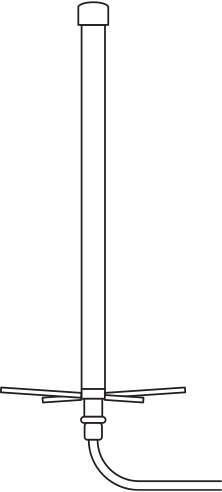
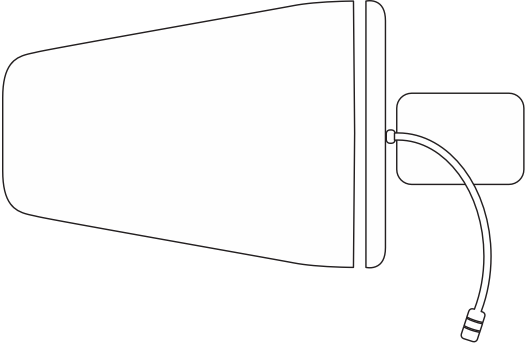
We generally recommend directional antenna, because often the benefits outweigh the drawbacks. The primary benefit to a directional antenna is the gain, which most people need if they’re looking for a cell phone signal booster.
The indoor antenna is the third essential piece to a cell phone signal booster, so just like the others, which one you get makes a difference. In this case, however, it’s a bit easier to make the distinction.
There are two types of indoor antenna, named by how they are shaped: dome, and panel.
A dome antenna is typically installed on the ceiling, radiating signal outward from the dome and bathing a circular area with better reception. Buy this if you need to cover a wide open room.
The dome antenna comes in two flavors: one shaped like a traditional dome, and the other like a thin plastic sheet. We call this second one “low profile” because unless you know it’s there, you would never notice it. There are some minor gain differences between the two, but aesthetics and cost are probably the most relevant differences between the two models. The low profile dome looks better, but costs a little more. It does, however, provide slightly more gain.

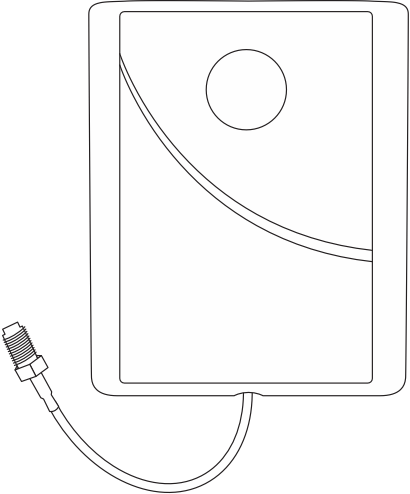
Bear in mind these are general differences, and without a floor plan, it can be hard to make accurate recommendations for which works best for you.
All amps that are 65-dB gain or stronger can support more than one inside antenna in case coverage needs to be expanded, and unless you live in a small area or only want one room coverage, buying additional indoor antennas could be warranted in certain cases. Just be aware that this will require a splitter and additional cable runs, which will result in a loss that must be factored in. The amount of additional inside antennas will depend on the booster model, the outside signal strength, the area needing coverage, and other variables.
In some cases, multiple indoor antennas may not be sufficient and the use of multiple booster systems inevitable.
Obviously, antennas aren’t free, so finding the sweet spot between cost and coverage is the goal. Once again, we come back to the question of outside signal strength. If your outside signal is good, you can get away with fewer antennas. If your outside signal strength is poor, you will need more antennas to cover the area. A rough estimate would be around 185 square meter per antenna with strong signal, and about 100 square meter with weak signal. These figures fluctuate greatly, however, and if you are unsure, consider erring on the side of caution and purchasing additional antennas.
Antennas for vehicles differ on what vehicle they are designed for as well as whether or not they are to be permanently installed. All vehicular outdoor antennas are omni-directional out of the necessity of handling a constantly changing signal, and are referred to by their mounting types.




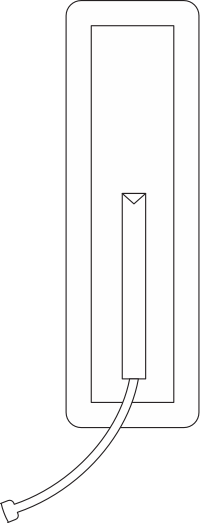
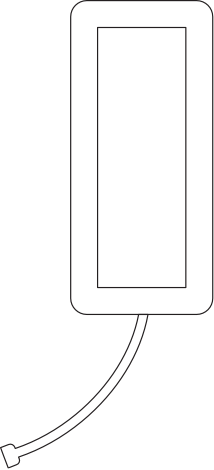
So how can you maximize your gain but minimize chances of your amplifier shutting down? One tool you can use comes kitted with every signal booster sold in Ghana: cable.
When signal travels through a cable, it loses strength. The shorter the cable, the less signal loss occurs. When thinking about signal strength, it is imperative to get the right length of cable to maintain quality signal.
All cell phone signal boosters are sold as complete kits. The coaxial cables kitted with the booster will generally work for most setups, however, they may not be optimized for your specific situation. There may be times when the cable provided is longer than it needs to be, and your booster’s output is reduced. Or you may have the opposite situation, where you need a bit more reach. In these situations, it is important to figure out how much length you can afford before signal loss offsets any signal gain.
For our signal boosters, we typically use one of six types of coaxial cable:
In general, the cable that comes packaged with your booster is suited to the task. However, pay close attention to the connectors.
Above, we discussed coaxial cable and threw around some terms like “50 ohm” and “75 ohm” which may have caused a few of you to scratch your heads.
An “ohm” refers to electrical resistance. Cables are measured by impedance, how much resistance there is to the flow of electrical energy. The smaller the ohm number, the better the performance. A 50 ohm cable provides much better results than a 75 ohm cable. However, there is a big physical difference between 50 and 75 ohm cables: 75 ohm cables are much thinner, and more commonplace.
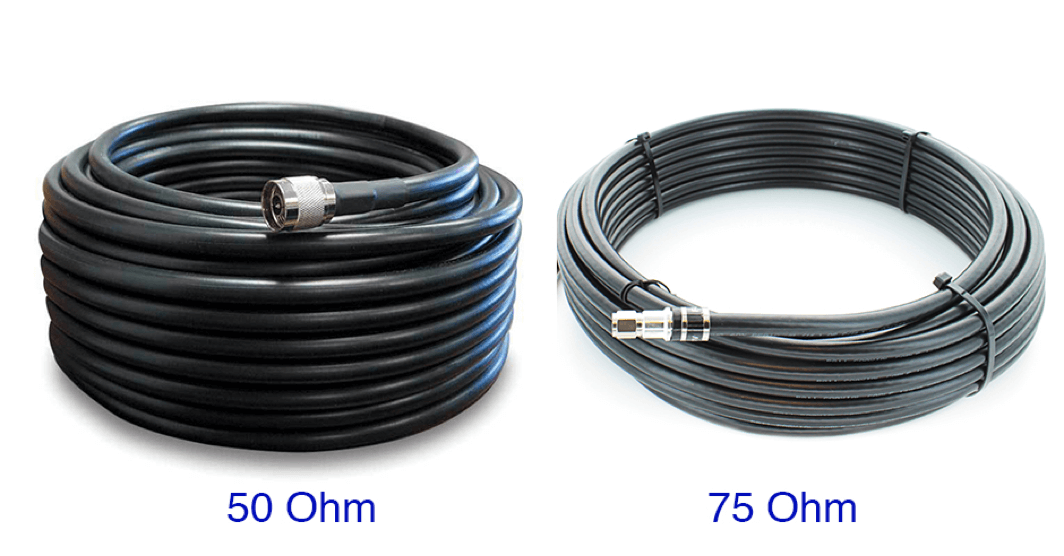
A general rule that doesn’t just apply to cell phone signal boosters is this: 75 ohm cables are sufficient for home and office use, because they do a perfectly fine job of transmitting signal up to 22 meters. They are smaller and easier to install, thus more common. 50 ohm cables are more industrial and bulkier, therefore less common. However, they’re critical to move signal over long distances.
It can be helpful and perhaps easier to remember the difference between 50 and 75 ohm coaxial cable rather than understand the more nuanced differences between individual cable types
If you have a large home or commercial installation and want boosted signal throughout, you might require a more fine-tuned system. Three accessories you may consider purchasing, or might be recommended to you by one of our installers, are a splitter, a diplexer/combiner, and a coupler.

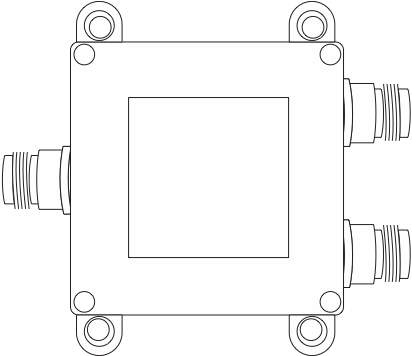

Surge protectors protect your home and booster in the unlikely event of a lightning strike. They are, more or less, insurance plans.A lightning surge protector is installed between the cable leading to the outdoor antenna and the amplifier. Properly grounded, it will protect your amplifier from lightning strikes. These are also called “inline” surge protectors.
We also recommend ensuring your amplifier’s power supply is protected by a common in-home surge protector, as well.
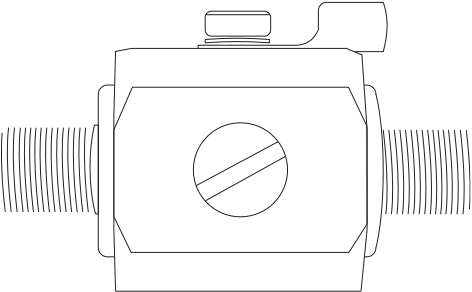
Pole mounts are accessories that makes it easier to install your outdoor directional antennas. The yagi antenna which comes standard with many signal boosters is designed to be mounted to a pole or mast on the roof of the building before being aimed at the nearest cell tower. Should you not have anything to use, a pole mount can help.
They vary in dimensions, with some being extremely basic - little more than a bent vertical shaft - and others with complex angled holes and multiple installation options to allow you to place the pole in the ideal location.
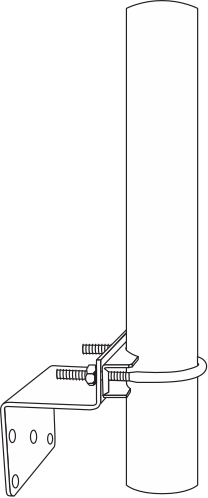
A public safety signal booster is a dedicated system that improves in-building two-way radio coverage for first responders. During times of emergency, reliable public safety radio coverage helps empower first responders stay connected and save lives.
A public safety signal booster bypasses building material–the leading cause of poor radio coverage–by capturing signal with an outside antenna, boosting signal with an amplifier, and broadcasting stronger emergency radio signal inside. It is protected by fireproof equipment (NEMA 4) and backed by a 12-hour battery source.
A public safety signal booster bypasses building material–the leading cause of poor radio coverage–by capturing signal with an outside antenna, boosting signal with an amplifier, and broadcasting stronger emergency radio signal inside. It is protected by fireproof equipment (NEMA 4) and backed by a 12-hour battery source.
Like many comparable technologies, cell phone tech has been released in generations. 2G, 3G, and 4G all refer to various generations of cellular technology that have been released over the last 30 years. 5G is just finishing up development and is not likely to have much of an impact until 2019.
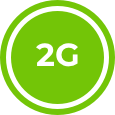
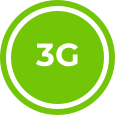
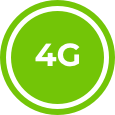

A huge shift in cellular communication has been several major carriers rolling out Voice over LTE technology. This allows phones to make calls and send and receive texts entirely over the 4G network bands, without ever using the older 2G and 3G networks which, until recently, handled those transmissions. Voice over LTE is dependent on having newer models of smartphone, which are compatible with the technology.
If you are interested in buying a cell phone signal booster, you should ensure the booster you choose to buy is 4G compatible if you want that increased signal on a carrier which primarily uses Voice over LTE.
3 dB – dB is a logarithmic scale, and 3 dB is exactly half the power. Most splitters have around 3 dB attenuation – they split the power coming through a coaxial cable in half.
Amplifier - The central component of any signal booster system. Takes the existing outdoor signal captured by a donor antenna and increases its strength, then sends it toward an indoor antenna, where it is rebroadcast.
Antenna gain – Gain derived from an antenna. This differs from amplifier gain, as antenna focuses on sending and receiving signal from a certain direction. Measured in dBi (decibel isotropic).
Attenuation – The weakening of signal over distance, or as it passes through building material. Attenuation is measured in dB, and is usually a negative value (signal gets weaker). -3 dB attenuation is twice as weak weaker signal. -20 dB attenuation is 100 times weaker signal.
Bands - Refers to the range of frequencies used by cell phone carriers to send and transmit voice, text, and data.
Coaxial cable – A type of cable designed to carry radio frequency (RF) signal. They usually have copper center conductors, some sort of shielding, and an outer conductor. Its resistance is measured in ohms.
Combiner - See “diplexer.”
Coupler - A device used to add additional antennas or cable runs where signal is spread unevenly. Also known as a tap.
Cradle - A vehicle antenna designed to cradle a single phone.
DAS - Distributed Antenna System. A setup that creates its own signal in a fixed space. Divided into “passive” systems and “active” systems.
Decibel (dB) - A unit of measurement used to express the ratio of one value of a physical property to another on a logarithmic scale. Refers in the context of this guide specifically to the quality of incoming cellular signal.
Decibel-milliwatt (dBm) - A unit of level used to indicate that a power ratio is expressed in decibels (dB) with reference to one milliwatt (mW). Refers in the context of this guide specifically to the strength of incoming cellular signal.
Directional antenna – An antenna that has a 45 to 90 degree field in which it picks up signal. Can pick up stronger signal from farther away than omni-directional antenna when pointed toward a cell tower, granting higher gain. The three main types of directional antenna are “panel,” “yagi,” and “log periodic” antennas.
Diplexer - A tool used to split higher and lower frequencies per port.
Donor antenna – The exterior antenna in a signal booster system that captures the outdoor signal.
Dome antenna – A type of indoor antenna that is most often installed in the ceiling of a building, and transmit signals downwards.
Downlink signal – The signal sent from the cell phone tower to your phone. For a cell phone signal booster, this determines how much signal an amplifier can process.
ICASA – The Independent Communications Authority of Ghana (ICASA) is the official regulator of the Ghanan communications, broadcasting and postal services sectors.
Frequency (Hz) - Frequency is the number of occurrences of a repeating event per unit of time. In the context of cellular phones, refers to the radio waves by which talk, text, and data are transmitted to and from a cell tower.
Gain (dB) – A measure of amplification. The higher the gain, the more a signal is amplified. Gain is a positive dB number, and it’s measured on a logarithmic scale. 0 dB gain means no gain. 10 dB gain equates to 10 times the signal strength, but 20 dB gain is 100 times more signal, and 30 dB gain is 1,000 times more signal.
Indoor antenna – The antenna that is installed inside the building or vehicle in a signal booster system which communicates with your cell phone.
Inline surge protector - See “lightning surge protector.”
Megahertz (MHz) - Unit of measurement deriving frequencies.
Multi-carrier booster - A device which boosts incoming signal from all available bandwidths broadcast by all major carriers.
Lightning surge protector – An accessory that protects your home, office, and signal boosting equipment in case lightning hits the donor antenna. Essentially a lightning rod.
Low profile - An omnidirectional vehicle antenna designed to be mounted to a dashboard or the side of a passenger seat.
Ohm (Ω) - The SI derived unit of electrical resistance. Fun fact: the symbol for it is the Greek “omega,” last letter of the Greek alphabet.
Omni-directional antenna – An antenna with low gain that receives and transmits signal in almost all directions equally. Easier to install than a directional antenna.
Oscillation - Electronic feedback. For cell phone signal boosters, can occur if the donor and indoor antennas are placed too near one another or the amplifier. This will cause the amplifier itself to shut down. In a broader context, concerns of amplifiers causing feedback to cell phone towers was the impetus for the FCC regulations on signal boosters implemented in 2014.
Panel antenna – An antenna that can be installed as a donor antenna outdoors or indoors on a wall, and transmits signal outwards in the direction it is facing.
Pole mount - A mount with a pole for installing an outdoor antenna. Comes in various shapes, these allow more precise placement of an antenna.
Public Safety booster - A booster specifically designed around Public Safety related radio frequencies - firefighting, police, EMS, and all other disaster response teams. These frequencies are mandated by federal law to be reserved for Public Safety purposes, and a Public Safety booster targets them.
Radio frequency (RF) – Radio frequency is any frequency used to transmit a wireless radio signal, which includes cellular signal, WiFi signal, and regular FM and AM radio.
Signal strength – A wireless signal’s strength is measured in dBm. Similar to gain, the signal is logarithmic. 0 dBm is 1 milliwatt, or 0.001 Watts; 30 dBm is 1 Watt; -10dBm is 0.0001 W, or 0.1 milliwatt.
Single-carrier booster - A device which boosts incoming signal based around bandwidths specific to a single cellular carrier. Capable of greater gains for that carrier but will not boost signal for any other carrier.
Splitter - A device used to reduce cable runs to multiple antennas. Splitters are best used when distributing antennas and running cables from a central location.
Spring - A type of mount for an outdoor vehicle antenna that can withstand a low clearance impact.
Tap - A device used to run cable and place antennas along a straight path.
UHF - Ultra high frequency. A shorthand designation for the range of radio frequency electromagnetic waves (radio waves) from 300 megahertz (MHz) and 3 gigahertz (GHz).
Uplink signal – the signal sent from your cell phone back to the tower.
VHF - Very high frequency. A shorthand designation for the range of radio frequency electromagnetic waves (radio waves) from 30 to 300 MHz, with corresponding wavelengths of ten to one meter.
Watt (W) - SI unit of power. Commercial cell phone boosters are generally limited to half a watt of power in order to prevent oscillation, per the FCC.
Yagi antenna - See “Directional antenna”
We've been doing this for a long time and we like to talk about it. Check out our blogs for all the latest news